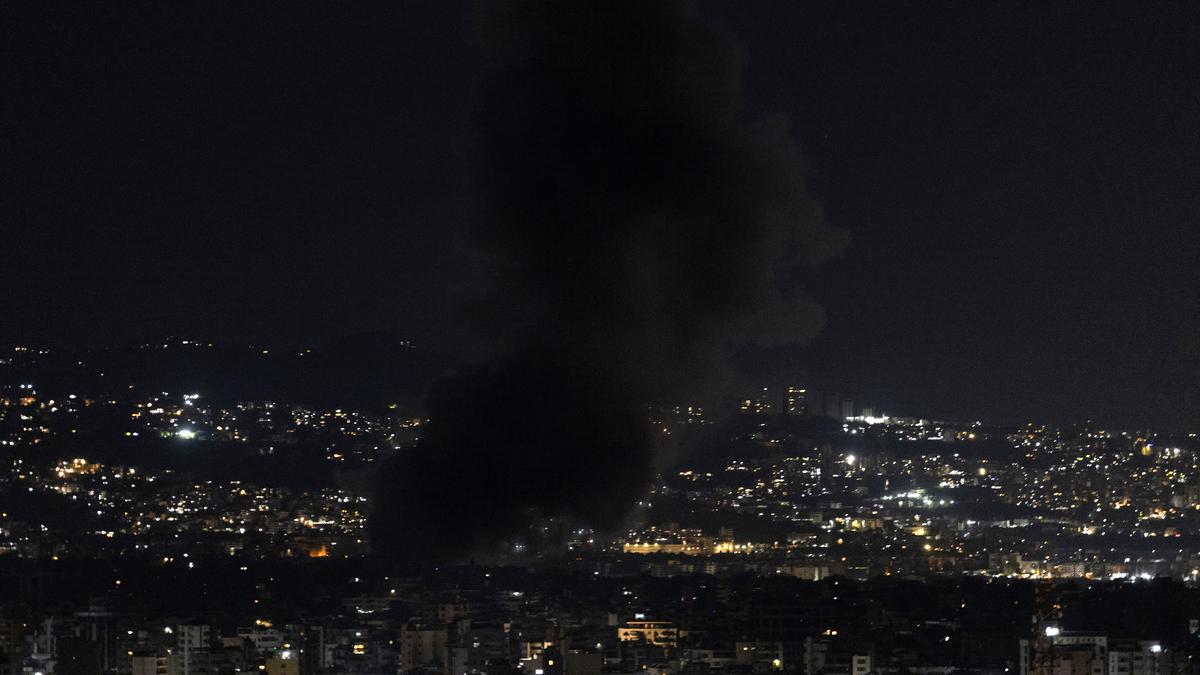
How Israel took the war straight to Iran’s ‘axis of resistance’ Premium
The Hindu
Israel and Iran engage in escalating conflict, with Israel targeting Hezbollah and Iran facing strategic decisions.
On April 1, 2024, when Israel bombed the Iranian embassy complex in Damascus killing Brig. Gen. Mohammed Reza Zahedi and other officers, Iran saw the war coming towards it. In December 2023, Israel had killed another senior general of the Islamic Revolutionary Guard Corps (IRGC), Sayyed Razi Mousavi, in a strike in Damascus. In retaliation, Iran launched a missile attack towards what it called a Mossad base in Erbil, Iraqi Kurdistan. It was a token response. But the April 1 attack marked a flagrant violation of Iran’s sovereignty. On April 14, Iran launched an unprecedented direct attack on Israel, by firing over 300 drones, cruise and ballistic missiles.
Iran wanted to change the rules of the game in its hostile engagement with Israel. The message Tehran was trying to send was that if Iranian sovereignty is breached or its officers were targeted, Iran would respond directly. And the message was well-received in Jerusalem in April. Israel’s retaliation for the Iranian attack was a meek, unclaimed air strike. But the situation would change in the following months, with two key developments in Iran.
In May, President Ebrahim Raisi, whose political and security views aligned with those of Iran’s conservative establishment, was killed in a helicopter crash. Masoud Pezeshkian, a moderate who preferred engagement with the West and restraint in West Asia, was elected President in June. In Iran’s transition, Israel found an opportunity to test its resolve.
On July 30, Israel killed Fuad Shukr, a senior commander of Hezbollah and a close confidant of Hassan Nasrallah, the group’s Secretary General, in an air strike on a Beirut suburb. A few hours later, Ismail Haniyeh, Hamas’s Doha-based political chief who was in Tehran to attend Mr. Pezeshkian’s swearing-in ceremony, was killed in the Iranian capital. In two strikes in two geographies, Israel hit three of its enemies — Iran, Hezbollah and Hamas — within 24 hours. Both Iran and Hezbollah vowed retaliation. Iran later reportedly decided to hold back its fire to give Gaza peace talks a chance. But Gaza ceasefire talks reached nowhere with Israel continuing to pound the enclave, killing hundreds of Palestinians every week. Iran, wary of triggering a wider war, still did not respond. Hezbollah, on the other side, fired some 300 short-range rockets, after Israel carried out air strikes, most of which were intercepted. Immediately after the rocket attack, Nasrallah said the retaliatory strikes were complete, signalling that he did not want escalation.
By that time it was evident that neither Iran nor Hezbollah wanted an all-out war with Israel. Iran wanted the axis, mainly Hezbollah and Houthis, to continue to bleed Israel through rocket, drone and missile strikes. Nasrallah, when he started firing rockets in the aftermath of the October 7 attack, wanted to keep some military pressure on the Israeli troops in the north at a time when they were waging a full-scale invasion of Gaza in the south. But Israel was ready for a wider war, for a number of reasons.
One, it knew that the Arab countries would do nothing besides issuing statements. It has absolute deterrence against its neighbouring Arab states. Two, if Israel’s actions trigger a wider war with Iran, Israel knew that the U.S. would come to its defence. In the early stage of the conflict, the U.S. had moved its carrier strike groups to the Red Sea and the Mediterranean Sea. When Iran launched its first direct attack on Israel on April 14, it was the U.S. that put together a defensive coalition which intercepted most of the projectiles. Three, a larger war, with direct support from the U.S. and its allies, would be an opportunity for Israel to hit Iran’s critical infrastructure and weaken the regime in Tehran.
So the two sides that were in the conflict had two different approaches towards the conflict. Iran wanted the axis to fight Israel. The axis (Hezbollah) wanted a limited war. But Israel was ready for escalation. And when Israel sensed reluctance on the side of its rivals, it decided to go with full force. Israel had been preparing since 2006 for the next war with Hezbollah. When Hezbollah expanded more like a conventional military force, particularly since its involvement in the Syrian civil war, Israel was preparing like a militia to attack Hezbollah. Once it decided to escalate the war, it first exploded the pagers and walkie talkies, indiscriminately targeting Hezbollah’s ground functionaries, its communication system as well as Lebanese civilians—these are tactics typically used by militias and terrorist entities. And then, Israel launched waves of massive air strikes on Lebanon, targeting Hezbollah’s senior commanders (also killing 1,000 people in a week). And then, the IDF went for Hassan Nasrallah, dealing the heaviest blow to Hezbollah.











